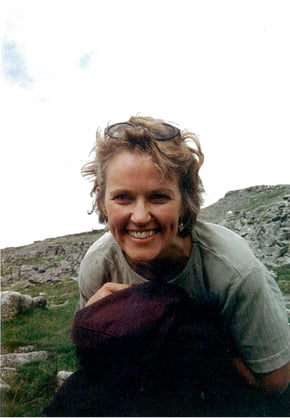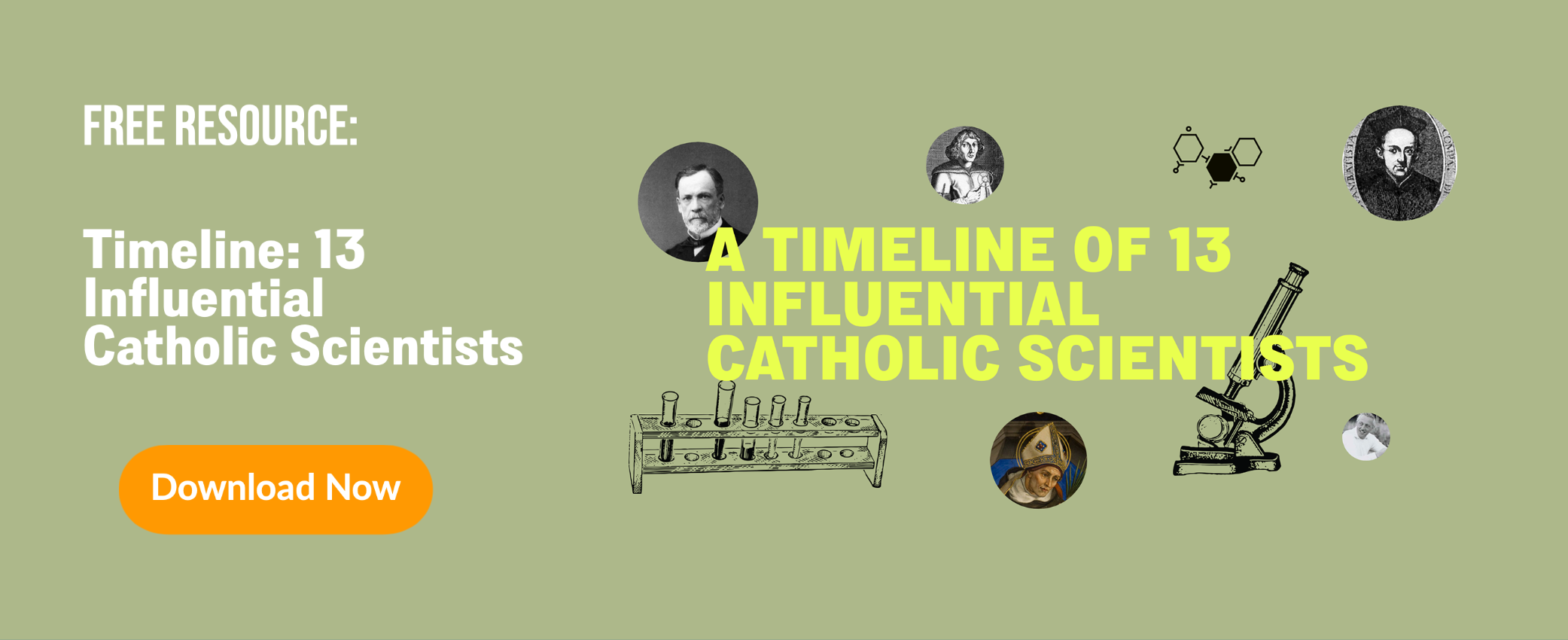Einstein claimed that he stood not on the shoulders of Newton, but on those of James Clerk Maxwell.
As a giant himself in the history of modern science, Einstein’s remark should prompt us to wonder: who was James Clerk Maxwell? He is considered the father of modern physics, but his contributions are so varied and his influence so dramatic, we will try to present them within the timeline of his life.
Contributions to Optics, Astronomy, and Physics
Maxwell was born in Edinburgh, Scotland in 1831. He spent his boyhood years “communing with nature” at his family’s country home, Glenair. At the age of 16, he published his first paper, “On the Description of Oval Curves and Those Having a Plurality of Foci.” After completing university studies at Edinburgh, he entered Cambridge. By the age of 24, he was appointed Professor of Natural Philosophy (physics) in Aberdeen. Maxwell married Katherine Dewar, daughter of the dean of Marischal College in 1858, a marriage which thrived over the next 21 years. She ably assisted him in his research especially his continued investigations into color vision and the behavior of gases (more about their relationship below).
Maxwell presented his original paper on optics, “On the Theory of Colour Vision,” to the Royal Society in 1855 (for which he won the Rumford Medal in 1860). In it he offered conclusive proof that the human eye recognizes three primary colors—red, blue, and green—and that color blindness was due to an inability to recognize the color red.
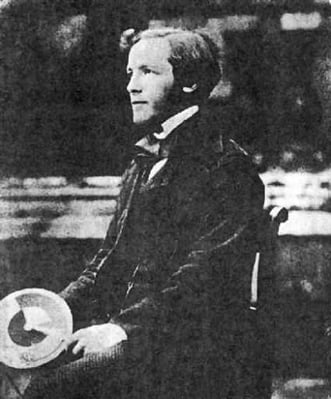
A young Maxwell at Trinity College, Cambridge, holding one of his colour wheels / Wikimedia Commons
Next, after studying the “problem” of Saturn’s rings for 2 years, he published a famous essay, “The Stability of Saturn’s Rings,” in which he predicted that Saturn’s rings could not be solid or made of gas (otherwise they should crash into Saturn or be flung out into space), but must be made of particles of various sizes in orbit around Saturn. His theory was confirmed over 100 years later when images from the spacecraft Voyager 2 confirmed that Saturn’s rings consist of particles ranging in size from a micrometer to a meter. Maxwell had correctly solved a problem baffling scientists for the 200+ years since Galileo first observed the rings in 1610.
In 1860, he accepted the position of Professor of Natural Philosophy (physics) at King’s College London. That same year, he published a paper applying probability to the distribution of gas particles, which later became known as the Maxwell-Boltzmann distribution. This distribution forms the basis of the kinetic theory of gases.
In 1861, Maxwell published “On Physical Lines of Force,” which describes how electric charges and currents create fields. Additionally, his equations describe how an electric field generates a magnetic field, and vice versa. Some technological implications were teased out by Hertz in 1888 and Marconi in 1901 with the invention of radio (and eventually television and microwaves!). At this time he demonstrated the first creation of a colored photograph, a re-creation of which is offered in a video here. The image is below:
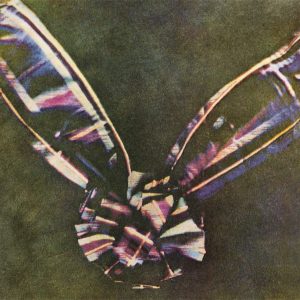 First durable color photographic image, demonstrated by James Clerk Maxwell in an 1861 lecture / Wikimedia Commons
First durable color photographic image, demonstrated by James Clerk Maxwell in an 1861 lecture / Wikimedia Commons
To place his work in a historical context, his most famous contribution was a lecture presented in 1864 a year after President Abraham Lincoln gave history the Gettysburg Address.
Father of Electromagnetism
His lecture, “The Dynamical Theory of the Electromagnetic Field,” described for the first time, electricity, magnetism, and light as different manifestations of the same phenomenon, which is now known as electromagnetic radiation.
This theory created a significant shift in our understanding of the universe comparable to that created by Isaac Newton. Although its extensive influence was not recognized at the time, Einstein used this theory and its mathematical expressions as the basis for his theory of relativity—hence his remark about standing on the shoulders of Maxwell.
Maxwell’s research, teaching, and papers continued to earn recognition and academic honors too numerous to include here. It is hard to imagine the sum total of his contributions if you include all of the students who were inspired by his energetic inquiries during the establishment and under his direction of the Cavendish Laboratories, Cambridge (where he spent the last 8 years of his life). He died quietly and courageously from stomach cancer in 1879.
The Man: Husband, Professor, Friend
We often view the greats in science through the lens of their scientific contributions and the influence of their work. We picture them in a study or laboratory, sternly hunched over research apparatus and messy pages full of notes or calculations. In modern terms, they are geeks—not particularly sociable or likable as human beings. In the life of James Clerk Maxwell, this could not be further from the truth.
Life long friends and colleagues, Lewis Campbell and William Garnett, composed a biography three years after Maxwell’s death from which an endearing and inspiring portrait emerged.
This biography might have escaped my notice except for a reference to his “poetry” at the bottom of one of the drier descriptions of his scientific achievements.
The introductory remarks in the biography give a hint to the profound affection and esteem with which his friends and colleagues regarded him. They are attempting, it says, to capture the memory and spirit “of a man of profound original genius, who was also one of the best men who have lived, and, to those who knew him, one of the most delightful and interesting of human beings.”
This is high praise, indeed! How, then, can we in turn capture the qualities of the man brought to life in those pages? Quotes from his correspondence with his wife and friends shall attempt to round out the details of a life lived to the full. First, it is clear that his enthusiasm for his work sprang from a deep faith.
For Maxwell, there was no tension between his belief in a Creator and his intense inquiries into the material workings of the universe.
“You may fly to the ends of the world and find no God but the Author of Salvation. You may search the Scriptures and not find a text to stop you in your explorations.”
His belief in his Creator, however, was not simply intellectual. His faith sprang from a deep relationship to Christ. For example, he wrote to his future wife, Katherine Dewar:
I think the more we enter together into Christ's work, He will have the more room to work His work in us. For He always desires us to be one that He may be one with us. Our worship is social, and Christ will be wherever two or three are gathered together in His name. —James Clerk Maxwell
Most of the letters to his wife, in fact, contain a spiritual insight derived from a mutually considered passage of Scripture. His devotion to his wife and her well-being are well documented in these pages.
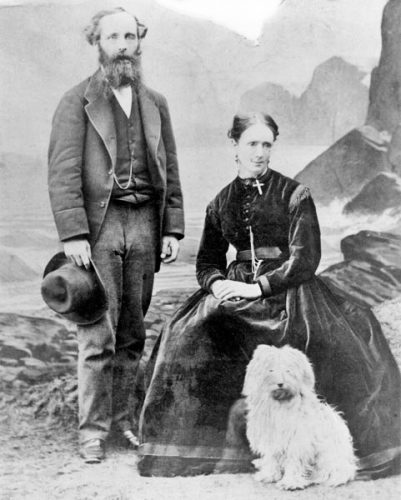 James and Katherine Maxwell, 1869 / Wikimedia Commons
James and Katherine Maxwell, 1869 / Wikimedia Commons
Through the Eyes of Others
After his death a sermon was delivered by Dr. Butler at St. Mary’s, Cambridge:
But having said this, we may well give thanks to God that our friend was what he was, a firm Christian believer, and that his powerful mind, after ranging at will through the illimitable spaces of Creation, and almost handling what he called “the foundation stones of the material universe,” found its true rest and happiness in the love and the mercy of Him whom the humblest Christian calls his Father.
There are many other testimonies to his humor, enthusiasm for his work, and the inspiration he engendered in his students, but we shall let the biographers have the last word:
Great as was the range and depth of Maxwell's powers, that which is still more remarkable is the unity of his nature and of his life.
That marvellous interpenetration of scientific industry, philosophic insight, poetic feeling and imagination, and overflowing honour, was closely related to the profound sincerity which, after all is said, is the truest sign alike of his genius and of his inmost nature, and is most apt to make his life instructive beyond the limits of the scientific world.
[O]ur age has much to learn from his example. —The Life of James Clerk Maxwell
Indeed.
I think men of science as well as other men need to learn from Christ, and I think Christians whose minds are scientific are bound to study science so that their view of the glory of God may be as extensive as their being is capable. —The Life of James Clerk Maxwell
Featured Image Credit: James Clark Maxwell and his wife / attributed to Jemima Blackburn, Public domain, via Wikimedia Commons
Read Also:
A Portrait of William Perry, Scientist and Poet
